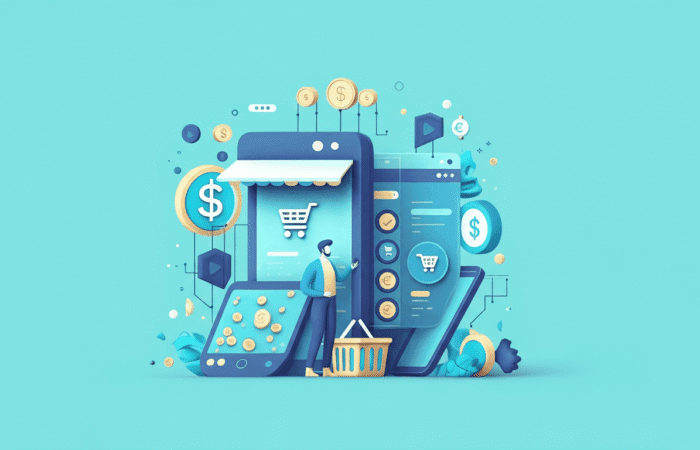The integration of a “Buy Now” button is more than just a trend; it’s a pivotal step in enhancing customer experience and boosting sales. In this section, we delve deeper into the multifaceted benefits of this feature.
Simplified User Experience
A “Buy Now” button reduces the steps a customer needs to take from product selection to purchase. By minimising friction in the buying process, you enhance user experience, leading to higher satisfaction and increased likelihood of repeat purchases. Customers today expect quick and easy shopping experiences. A streamlined process where users can swiftly move from interest to purchase without unnecessary clicks can significantly enhance their satisfaction. Moreover, simplifying the purchase path can also improve brand perception, as users associate the ease of shopping with the efficiency of the business.
Increased Conversion Rates
Conversion rate optimisation is a critical aspect of digital marketing. Integrating a “Buy Now” button directly into your product pages allows customers to swiftly transition from browsing to purchasing, thus reducing abandoned trolley rates and enhancing conversions. By reducing the number of steps needed to complete a purchase, you also minimise the chances of potential distractions or second thoughts. A direct purchase path can appeal particularly to impulse buyers who are more likely to complete a transaction when faced with a straightforward option. Furthermore, the psychological impact of a clear call-to-action can propel hesitant buyers to make quicker decisions, thus improving overall conversion rates.
Enhanced Mobile Shopping
With the proliferation of mobile shopping, it’s essential to cater to users on smaller screens.
“Buy Now” buttons are mobile-friendly and enable seamless purchases without requiring users to navigate through multiple pages. In an age where mobile usage often surpasses desktop, ensuring a smooth mobile experience is crucial. Mobile users are typically on the move, seeking quick and efficient solutions, making a “Buy Now” button indispensable. Additionally, a well-implemented mobile strategy can significantly reduce mobile trolley abandonment rates, as users appreciate the speed and convenience of a simplified buying process. By optimising for mobile, you also align with search engine preferences, potentially boosting your site’s ranking and visibility.
How to Implement a “Buy Now” Button
Implementing a “Buy Now” button requires careful consideration of multiple factors to ensure it effectively serves its purpose. This section guides you through the essential steps for successful integration.
Selecting the Right Platform
Before implementation, selecting the appropriate e-commerce platform is paramount. Platforms like
Designing the Button
Design plays a crucial role in attracting clicks. A well-designed “Buy Now” button should be:
- Visually Distinct: Use contrasting colours to ensure the button stands out on the page.
Ensure the button size is appropriate for both desktop and mobile views, striking a balance between visibility and aesthetics. The colour scheme should align with your brand identity while still standing out enough to draw attention.
- Clear and Concise: Use straightforward language such as “Buy Now” or “Shop Now” to avoid confusion. Avoid using jargon or unclear terms that might deter potential customers. The text should be legible and large enough to read at a glance, especially on smaller screens.
- Strategically Placed: Position the button near the product description and price to encourage immediate action. Consider placing it above the fold to ensure it’s visible without scrolling, capturing the attention of users immediately. Aligning it with key information like product benefits can also encourage quicker decision-making.
Ensuring Seamless Integration
For a “Buy Now” button to function effectively, ensure it integrates seamlessly with your existing checkout process.
This integration involves connecting the button to your shopping trolley and checkout systems to facilitate smooth transactions. Ensure that the button’s functionality doesn’t disrupt the user journey or cause any technical glitches. Integration should also bear in mind security aspects, maintaining user trust during the transaction process. Regular checks and updates may be necessary to keep the integration seamless and efficient as technological standards evolve.
Testing and Optimisation
Testing is a critical step in the implementation process. Conduct A/B testing to determine the most effective button design, placement, and wording. Continually analyse performance metrics and make data-driven adjustments to optimise conversions. Testing should be an ongoing process, adapting to changes in consumer behaviour and technological advancements. User feedback can provide invaluable insights into potential improvements and areas of friction.
Additionally, consider seasonal trends and adjust your testing parameters to reflect changes in consumer buying patterns throughout the year.
SEO Considerations
Incorporating a “Buy Now” button into your website should align with your overall SEO strategy to maintain and boost visibility. This section addresses key SEO aspects to bear in mind during implementation.
Impact on Page Speed
The addition of a “Buy Now” button should not negatively impact your website’s load time. Ensure that all scripts and images associated with the button are optimised for speed to maintain a positive user experience and SEO performance. Use compressed image formats and efficient coding practices to reduce load times. Consider utilising browser caching and content delivery networks (CDNs) to enhance speed further. Regularly monitor your site’s performance using tools like Google PageSpeed Insights to identify and promptly deal with any speed-related problems.
Mobile Optimisation
With Google’s mobile-first indexing, it’s essential to ensure your “Buy Now” button is optimised for mobile devices. This involves responsive design practices and testing the button’s functionality across various devices and screen sizes. Ensure the button is easily clickable and functional on touchscreens without causing accidental clicks. The layout should adapt smoothly to different screen resolutions, maintaining usability across all devices. Regular testing on various devices can help identify any issues and provide a consistent experience for all users.
Keyword Strategy
Incorporate target keywords such as “add to basket,” “checkout button,” and “purchase button” in your product pages and metadata. This strategy enhances your site’s visibility in search engine results and attracts users actively searching for purchasing options. Use long-tail keywords to capture niche markets and improve search ranking.
Ensure keywords are naturally integrated into content to avoid keyword cramming, which can negatively impact SEO. Regularly update your keyword strategy based on search trends and algorithm changes to remain competitive.
Real-World Examples
Learning from successful applications can provide valuable insights into the effective use of “Buy Now” buttons. Here, we examine prominent examples from leading e-commerce platforms.
Amazon’s “Buy Now” Button
Amazon’s “Buy Now” button exemplifies seamless user experience. By allowing users to purchase with a single click, Amazon reduces resistance in the buying process and increases sales. This feature is particularly beneficial for returning customers who have stored payment information, streamlining repeat purchases. Amazon’s approach emphasises the importance of convenience and speed, critical factors in retaining customer loyalty.
The success of Amazon’s “Buy Now” button highlights the potential impact of simplifying the purchasing process on sales and customer satisfaction.
Shopify Shops
Shopify offers a customisable “Buy Now” button that integrates with various themes and checkout systems. This flexibility allows businesses to tailor the button to their branding and user experience needs.
Conclusion
The integration of a “Buy Now” button is a strategic move that can significantly impact your online sales and user experience.
By simplifying the purchasing process, enhancing mobile accessibility, and optimising for SEO, you position your business for success in the evolving e-commerce landscape of 2025. Whether you’re a digital marketing specialist, website owner, or start-up entrepreneur, leveraging the power of a “Buy Now” button can drive business growth and enhance your competitive edge.
Incorporate these insights into your digital strategy to maximise your online presence and conversion rates. With careful planning, implementation, and continuous optimisation, you can transform your website into a robust sales platform that meets the needs of modern consumers. As you implement these strategies, remember that the e-commerce landscape is constantly evolving, requiring ongoing adaptation and innovation to maintain and grow your market presence.









